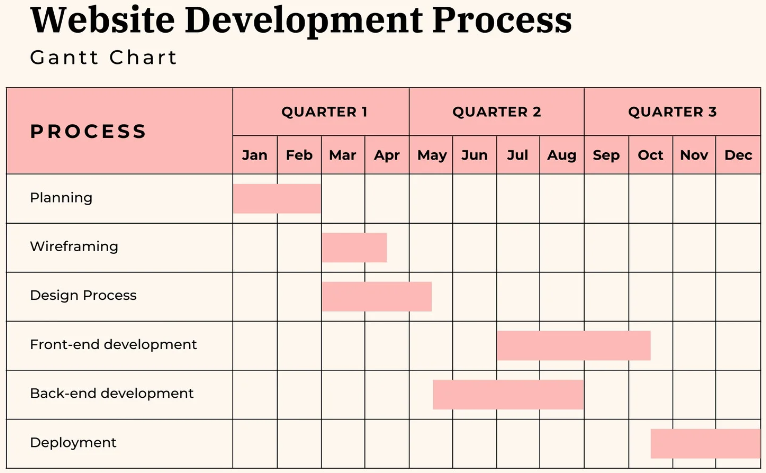Gantt Chart - Roadmap Project Chart

A Gantt Chart is a visual tool used to manage project schedules. It displays a timeline of the project along with the various tasks that need to be completed and the duration of each task. It also shows the dependencies between tasks, which allows project managers to see how one task affects another.

Pros of a Gantt Chart:
- Provides a comprehensive overview: A Gantt Chart provides a clear and concise overview of the entire project, making it easy to see what needs to be done, when it needs to be done, and who is responsible for each task.
- Enables scheduling and resource allocation: By providing a clear understanding of the project schedule, a Gantt Chart allows project managers to effectively allocate resources and ensure that tasks are completed on time.
- Facilitates communication: A Gantt Chart can be shared with all team members and stakeholders, which facilitates communication and transparency throughout the project.
Cons of a Gantt Chart:
- May be too complex for small projects: While a Gantt Chart is an effective tool for managing large, complex projects, it may be too complex and time-consuming for smaller projects that require less planning and oversight.
- Requires frequent updates: To be effective, a Gantt Chart requires frequent updates to reflect changes in the project schedule. This can be time-consuming and may be challenging if team members are not fully committed to the process.
- Can be difficult to adjust: Making changes to a Gantt Chart can be challenging, especially if the project has already begun. This can lead to delays and may make it difficult to adapt to changing circumstances.